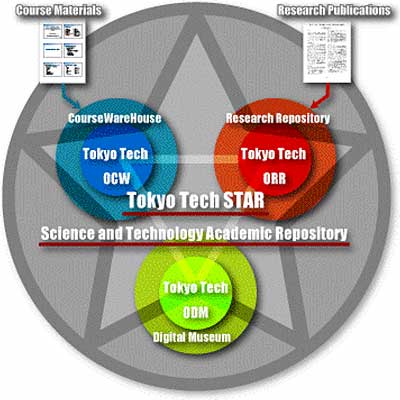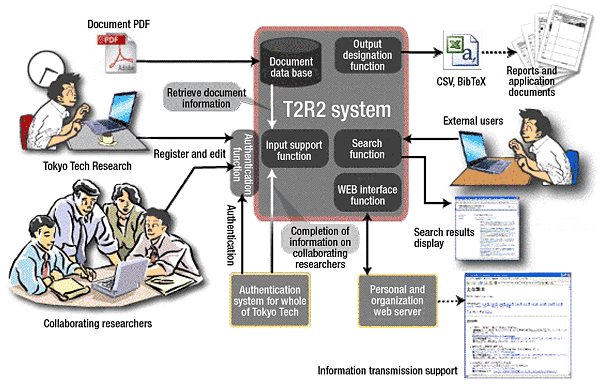Tokyo Tech News
Tokyo Tech News
Published: September 30, 2009
With more than 1,100 full-time research and teaching staff, Tokyo Tech is a noted center for generating research papers, manuscripts and other documents on science and technology. In addition, the university is active in creating a portfolio of patents, and its doctoral students produce hundreds of theses every year. Keeping a record of all this material—currently some 155,000 individual items—and making it available for easy access is the task of a sophisticated content management system dubbed the Tokyo Tech Research Repository, or simply T2R2.
"Before implementing T2R2 four years ago, we used a database that had been showing its age," says Hauro Yokota, a professor at the university's Global Scientific Information and Computing Center. Yokota headed the group that designed T2R2 to meet the specific needs of the university. The old system, he explains, was inefficient and cumbersome to use. For instance, in order to list all the authors of a co-authored paper, each writer had to separately key in his or her name and other pertinent information, in order to be listed as one of the manuscript's authors. "Besides the redundancy involved, it made counting the number of different papers difficult," says Yokota. "With T2R2, only one author needs to upload the paper's reference details and then simply instruct the system to link the other registered authors to the meta-data. It's much more efficient and makes life easier for everyone."
There are other advantages. When a lab, department or similar Tokyo Tech establishment is required to publish, for example, an annual report referencing the papers it has produced during the academic year, a single staffer merely keys in certain search criteria to generate a list of the department's staff, as well as a list of all their published papers. "In the past, each individual had to key in information separately regarding the work he had participated in over the year," says Yokota. "So, compiling a report for an entire center or department was tedious; no one liked doing it. The time saved now is enormous."
Besides conducting data searches using key words, document titles and authors' names, T2R2 can also search by organization and by patent criteria. Access to the reference repository is unrestricted, so even those not associated with the university can conduct searches of the material, which is stored in English and Japanese. To upload reference material, T2R2 users, having registered with the system, simply authenticate themselves electronically by means of their Tokyo Tech ID cards. In the case where an entire paper is to be uploaded (in the PDF format) the system automatically recognizes the paper's authors and title, copies this meta data and places it into the correct fields for data searching. What's more, should a journal or magazine in which a paper was originally published relax their copyright, the system will flag the paper's new status, enabling the system's administrator to make it available for storing and accessing directly on T2R2. Currently, the number of such papers available is almost a thousand and is increasing rapidly.
Yokota is working to further increase the system's capabilities. The university has standardized the use of OpenCourseWare (an education resource-sharing scheme developed by the Massachusetts Institute of Technology) to make all its educational materials including lectures and syllabuses web-based for easy access via Tokyo Tech's own CourseWareHouse system. "We want to link CourseWareHouse to T2R2, and this work is already underway," says Yokota. Another task is to tie in the web sites that each member of the teaching and research staff has established for themselves. However, this is proving quite a challenge, because each individual has used their own criteria and a variety of tools to create their site.
Eventually, CourseWareHouse and T2R2 will be linked to an online virtual museum called the Open Digital Museum, which will contain digitized representations of all the university's academic achievements going back to its foundation in 1881. When completed, these three knowledge systems will form the Tokyo Tech STAR: the university's unified Science and Technology Academic Repository.


Reference
Haruo Yokota
Graduate School of Information Science and Engineering Computer Science
Professor